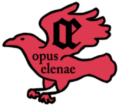Lilium Aureum (part two): Painting the Scroll
Commence Part Two! The first thing I did was to fill in the rest of the calligraphy. I tend to be pretty confident when it comes to my calligraphy (I have a tendency to give one of my mentors heart attacks because when I work with other illuminators, I’ll do the calligraphy after theyre finished painting instead […]
Lilium Aureum (part two): Painting the Scroll Read Post »
